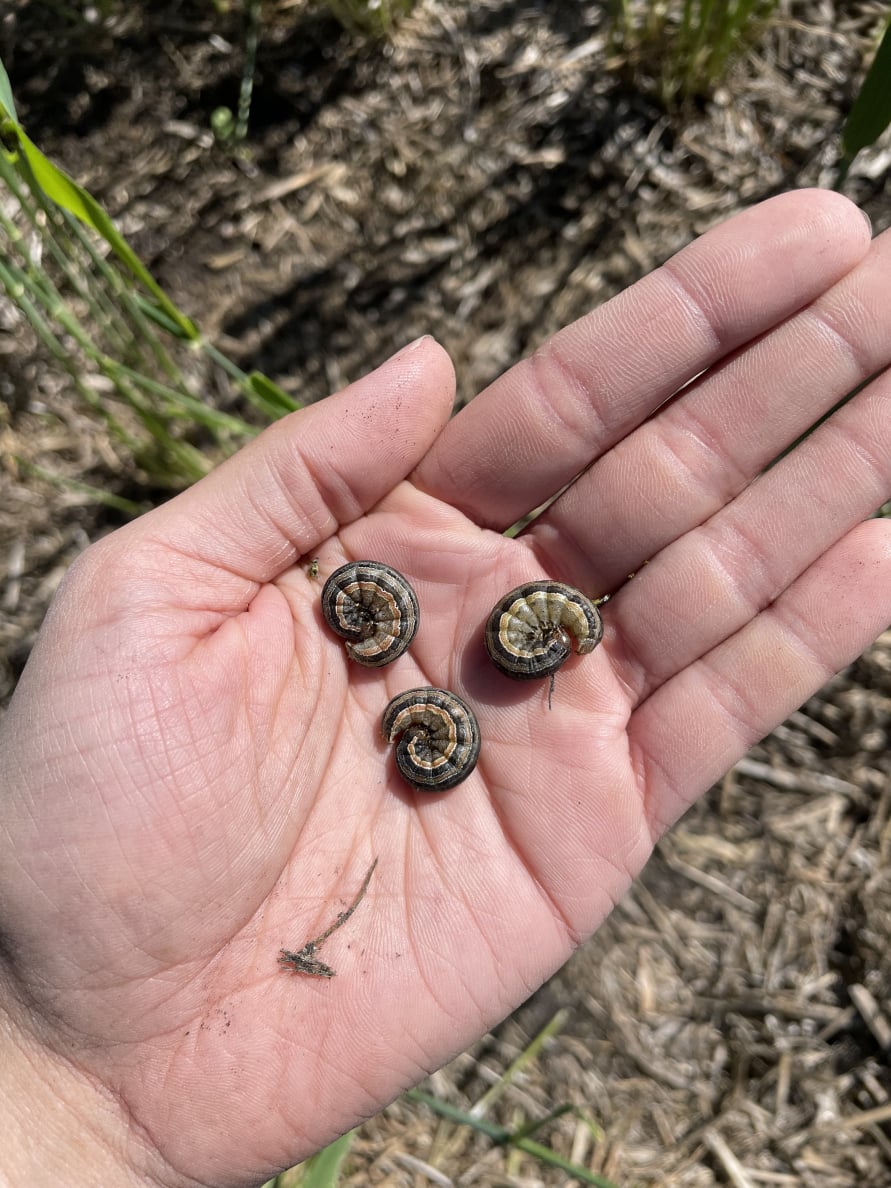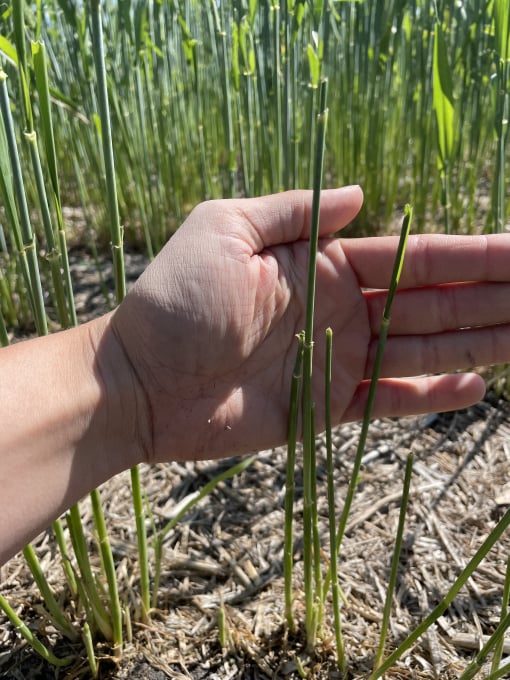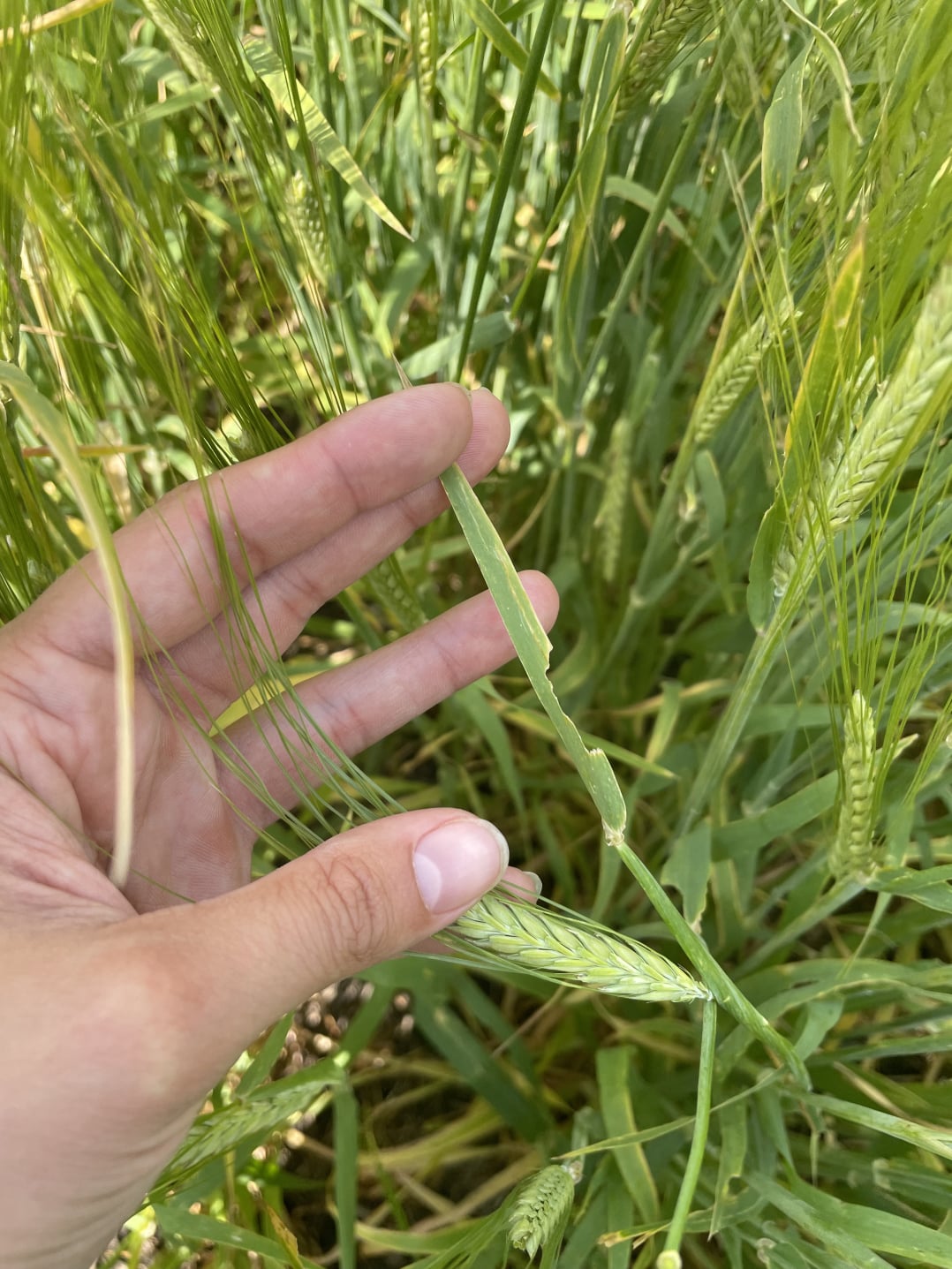
Armyworm larvae

Clipped heads

Armyworm larvae

Clipped heads
If warranted, an insecticide application should be sprayed in the evening when armyworms are present. According to the most recent Manitoba Crop Pest Update, lots of larvae are either starting to pupate or are being controlled by parasitoids [3]. These parasitoids’ pupal clusters can be found in fields and are often confused with eggs.

Parasoid wasp pupal clusters

Grasshopper damage
Grasshopper eggs are laid in late summer to early fall. These eggs overwinter, hatching into nymphs come springtime. Both nymphs and adults feed on crops, causing damage.
| CONTROL | FIELD NUMBER/M2 | ROADSIDE NUMBER/M2 |
|---|---|---|
| Control not usually required | 0-6 | 0-12 |
| May be required | 7-12 | 13-24 |
| Control usually required | 13+ | 25+ |